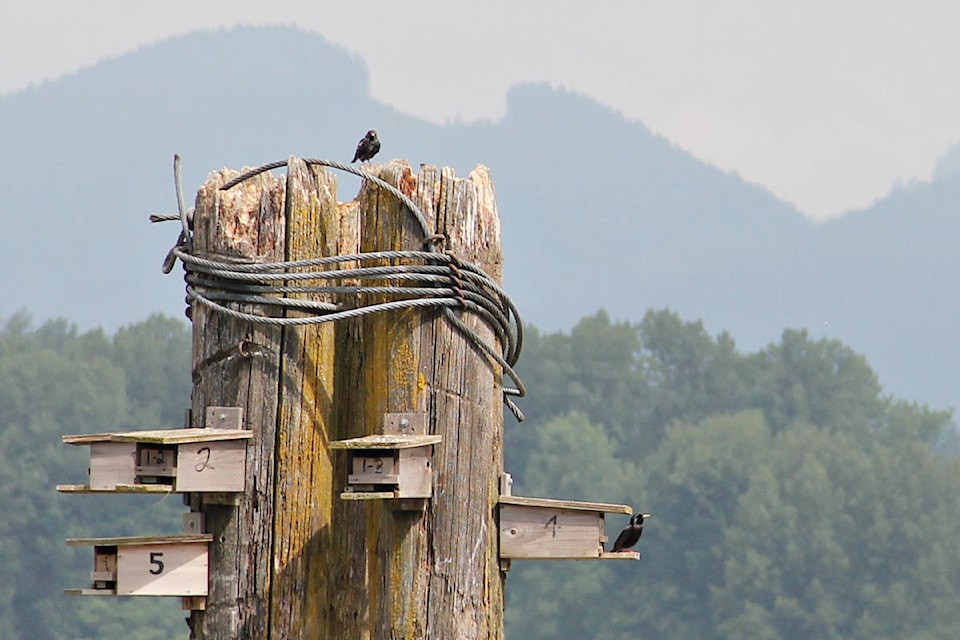An errant log boom has wiped out a habitat for rare purple martin birds built on top of a piling in the Fraser River near Langley.
A social media post on Monday, May 24 by one eyewitness reported a log boom had escaped from its mooring that morning and knocked over the pole, taking the attached wooden nesting boxes with it.
Two tugs were called in to keep the boom from hitting the docks, the witness said.
Installed in 2012 at the end of Brae Island at Tavistock point by Metro Vancouver staff and monitored by the Langley Field Naturalists (LFN), the wooden boxes had finally become home to a small colony of nesting pairs, which were observed in 2018, but may have set up home the year before.
READ ALSO: Swallows, swifts and more
LFN president Lisa Dreves said the boxes were part of a campaign to bring the Purple Martin back after the species lost almost all of their habitat to humans.
“Historically, this would have been part of their territory, but they disappeared for many years,” Dreves explained.
Dreves is crossing her fingers that the the four breeding pairs in the demolished boxes will relocate to other, empty purple martin boxes that were installed on the south side of Bedford channel.
“The hope is that they didn’t lay any eggs.”
Dreves described how a lot of hard work went into setting up and monitoring the nests on the piling.
“You had to walk through a lot of mud to get there,” Dreves related.
Dreves said it isn’t known if the pole will be replaced.
A third set of purple martin boxes at Meunch Bar that were only installed last year have had purple martins “checking them out already this year,” Dreves added.
READ ALSO: Langley Field Naturalists offer free zoom presentations
Said to be the largest swallow in North America, purple martins are known for their speed, agility, and their characteristic mix of rapid flapping and gliding flight pattern.
A provincial environment ministry report says the purple martin “maintains a precarious toehold as a breeding species” in the province.
They are at the northwestern limit of their range in B.C., vulnerable to cold snaps that can eliminate the flying insects they feed on.
In the past, purple martins nested in snags near fresh or salt water, and have adapted to changing circumstances by adopting specialised nesting niches in harbour pilings, as well as in crevices in buildings.
“Without human intervention, particularly the provision of artificial nestboxes, this species would probably have been lost to British Columbia some time ago,” the report notes.
By 1994, all known nesting pairs in the province were using artificial nest-boxes, mainly built on pilings.
Is there more to the story? Email: dan.ferguson@langleyadvancetimes.com
Like us on Facebook and follow us on Twitter.
